Spearmint color is primarily associated with freshness. It fills the space with spring coolness, soothes, and creates a sense of openness. At the same time, the shade cannot be classified as basic, and it requires the right environment. In this article, we’ll talk about how to properly use spearmint color and what it’s best paired with.
Color Features

Spearmint is a complex color. It’s a cool shade of green with a hint of blue, which has its gradation: from delicate pastel to saturated turquoise or pine.
When adding it to the palette, several features should be taken into account:
- Despite officially belonging to the cool spectrum, spearmint, being a natural color, is perceived neutrally by the eye. Thanks to this, the shade can be “warmed up” or made even more refreshing by combining it with certain colors and textures.
- The two main effects of spearmint are a sense of coolness and relaxation. Therefore, it is well suited for rooms with windows facing south, as well as for spaces where you want to create a calm and soothing atmosphere. That’s why it’s often chosen for children’s rooms, especially if the child is hyperactive.
- This shade is quite versatile, it looks good in most modern styles. Since it’s a diluted color, visually it can be perceived as a faded blue or green, fitting organically into vintage interiors: shabby chic, Provence, retro.
- Spearmint pairs well with most colors, but the combination with other pastel tones is considered classic: white, sandy, powdery, gray, beige, etc. Moreover, the spearmint color doesn’t fade against saturated colors, and therefore can serve as both a neutral background and a bright accent.
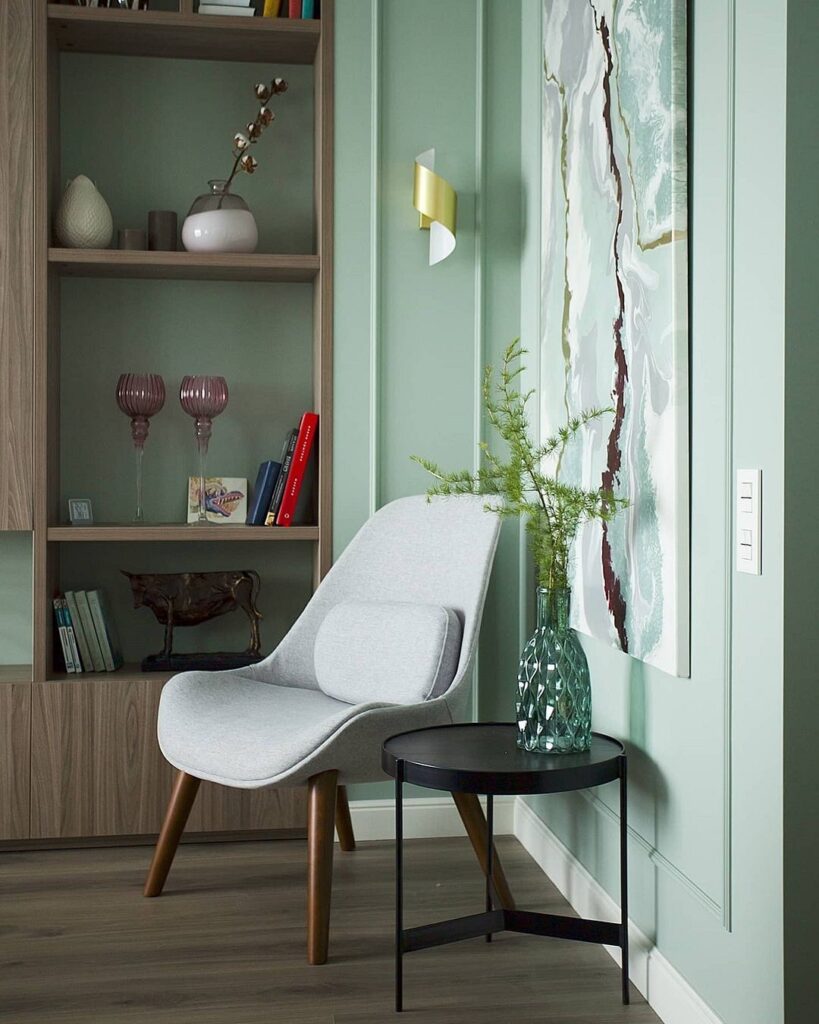









Where and How to Apply
Spearmint is quite safe: it doesn’t have a negative impact on the psyche and doesn’t irritate. Therefore, it can be used in any quantity and on any surfaces in the room.
Finishing

In the living room, bedroom, hallway, children’s room, and bathroom, subdued spearmint can be used as a base. You can confidently paint all the walls with it or choose a more saturated shade and create an accent wall. An interesting technique is color blocking, which means decorating the space with large color spots (blocks). Thus, spearmint wall color in the interior can be used in moderation, diluted with both neutral and equally vibrant colors.

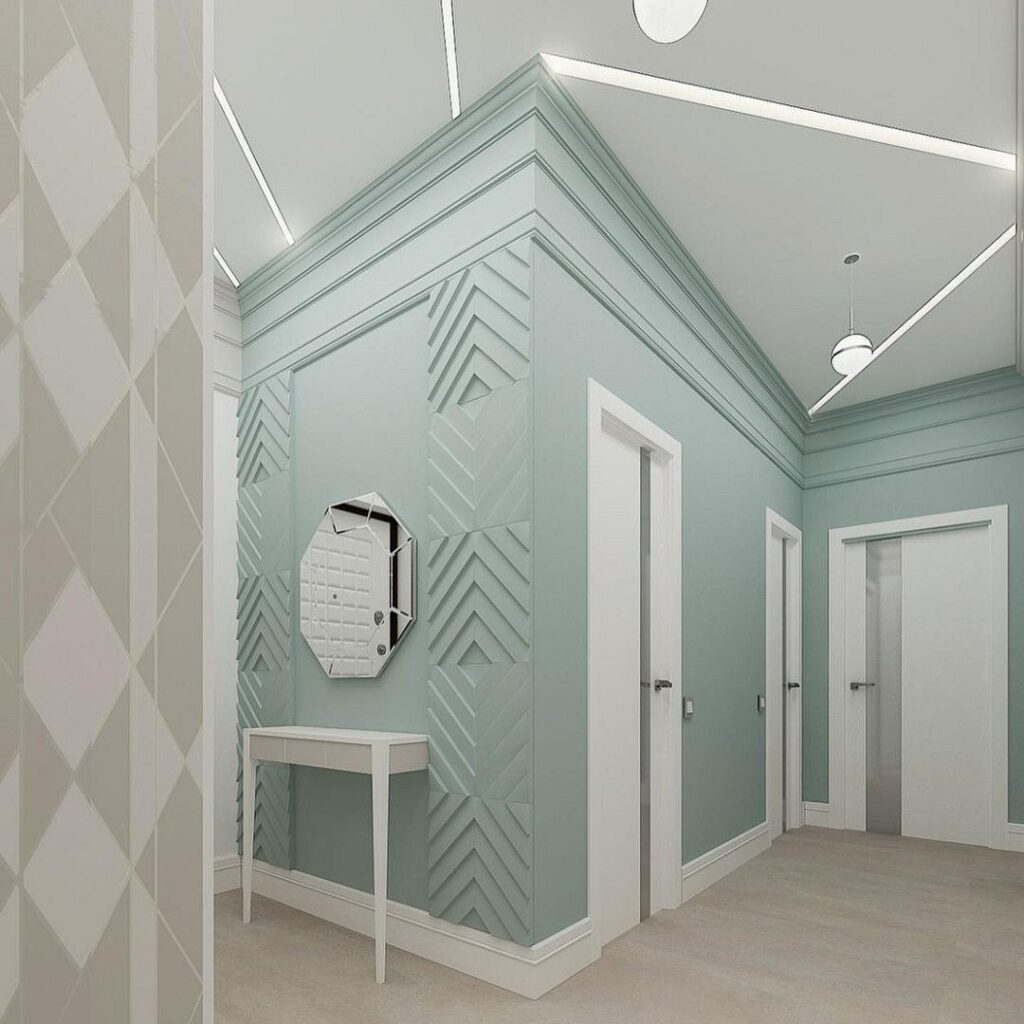





Greenish-blue walls are often found in bathrooms because they suit this room perfectly, and the shade itself resembles the color of water.
In combination with white plumbing fixtures, mirrors, and glossy surfaces, it creates an airy and visually more spacious interior.



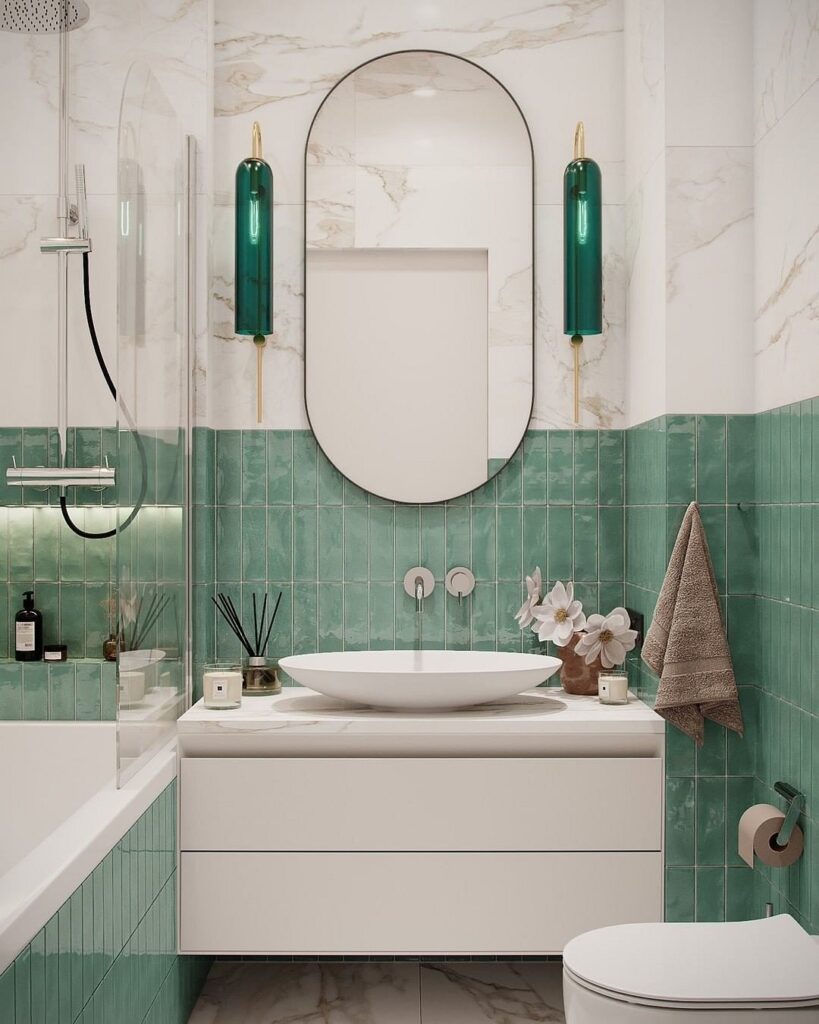

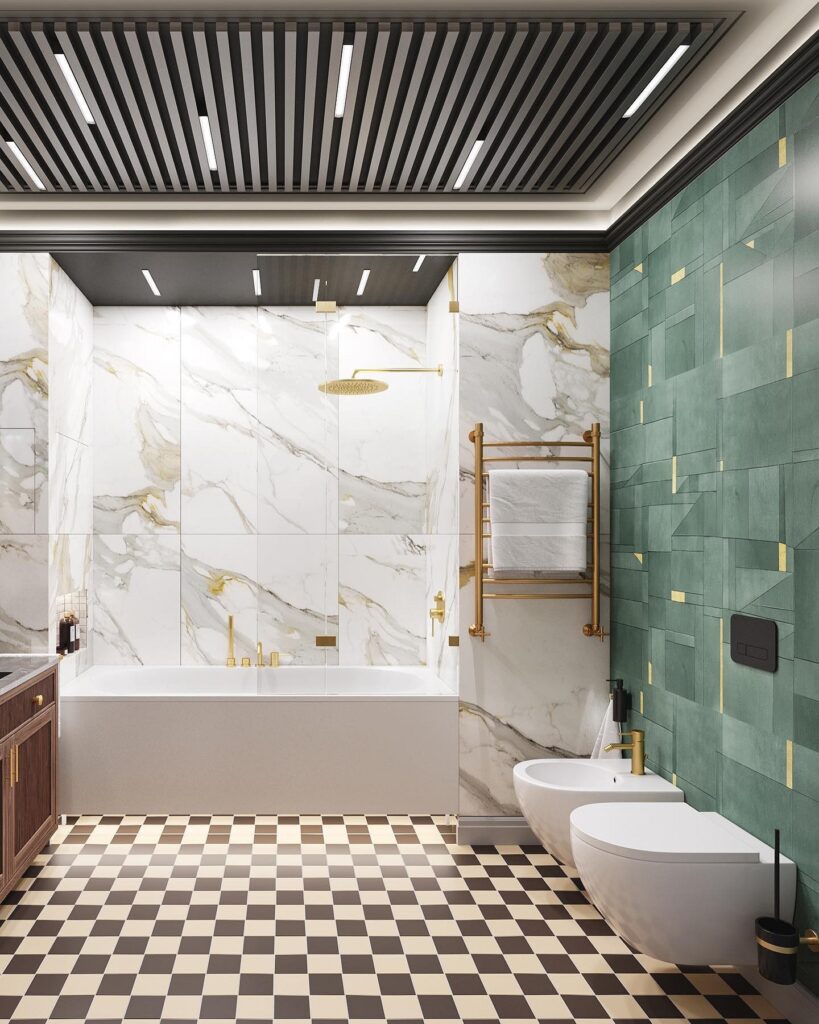



Furniture
If colored finishing seems too bold of a choice, it’s easy to liven up the interior with furniture.

In the living room, this could be armchairs, a sofa, or, for example, a coffee table. In the bedroom, it could be a bed or a padded headboard. If the furniture piece is used as a bright accent, you can choose a more saturated hue.

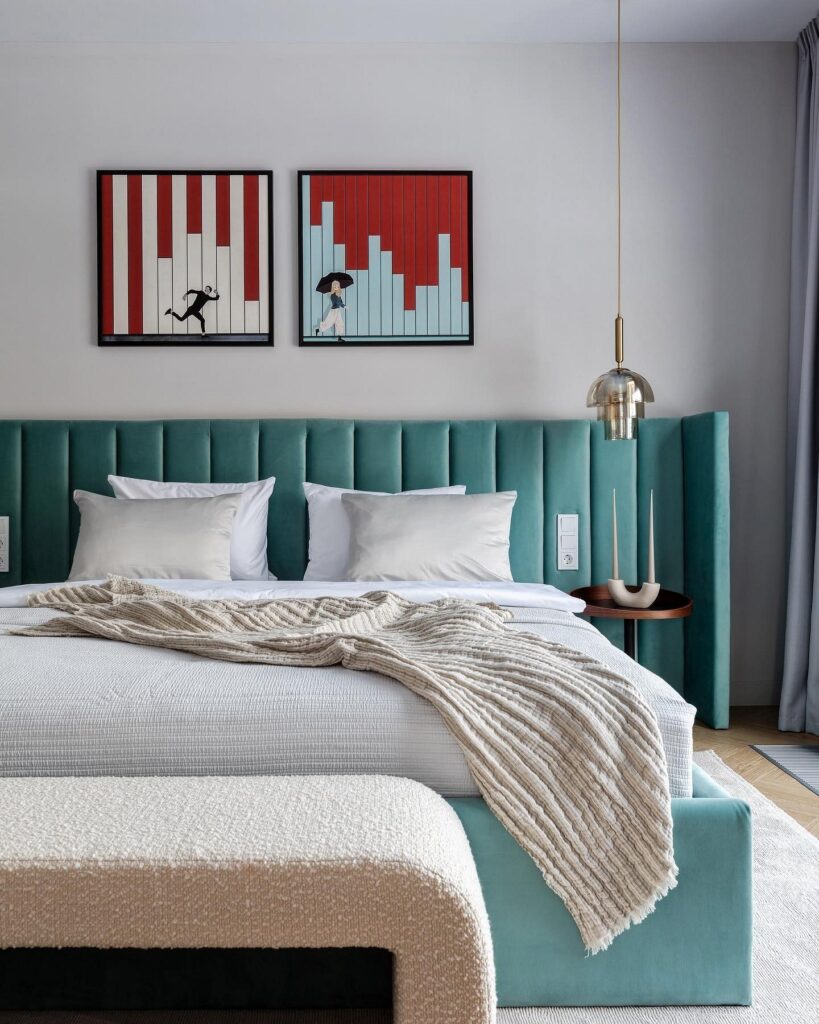





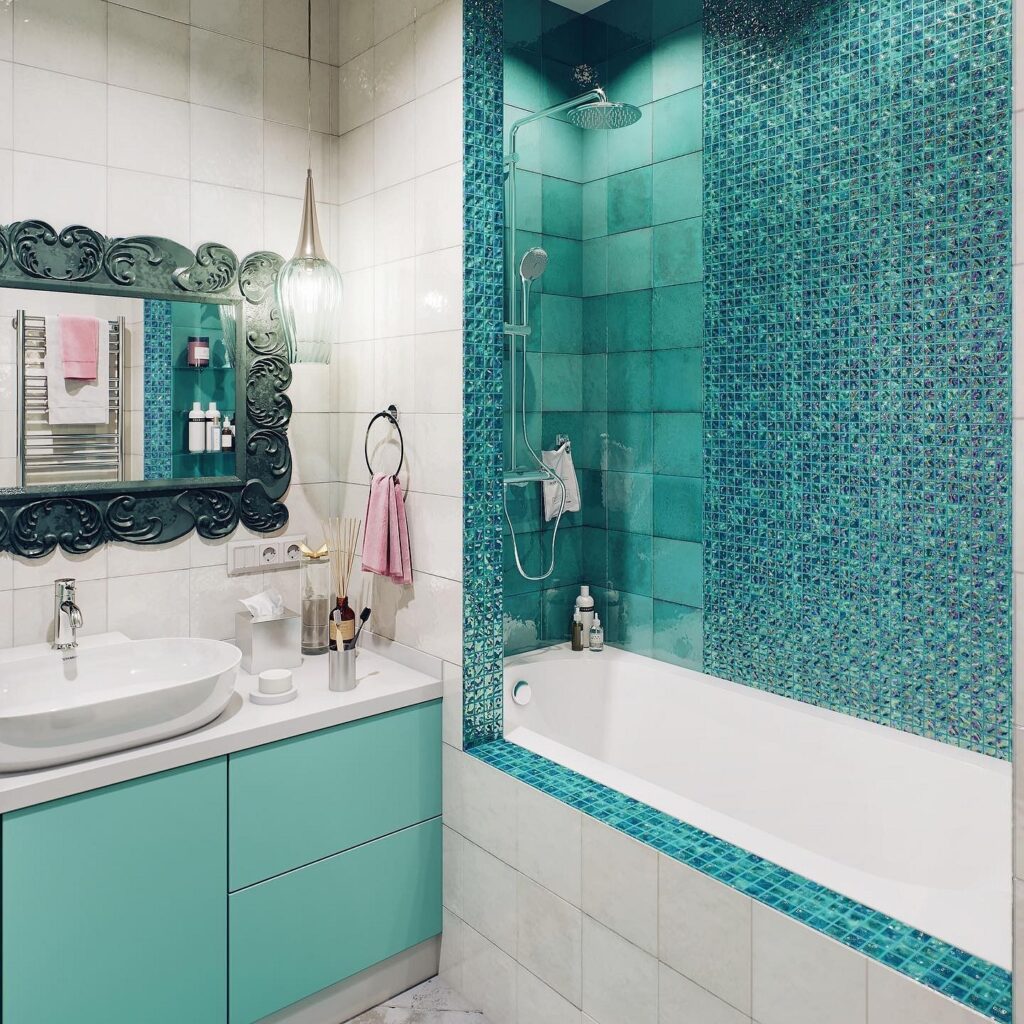





The furniture in mint color looks harmonious in any sized kitchen. If you decide to decorate your set in fresh tones, the texture of the surface will influence the visual perception. Gloss emphasizes the coolness of menthol, while matte finish does the opposite. If the goal is to create a neutral kitchen environment, you can opt to style only a part of the set in gray-blue. In this case, it’s worth complementing it with light details and a maximally calm white, light gray, or beige finish.


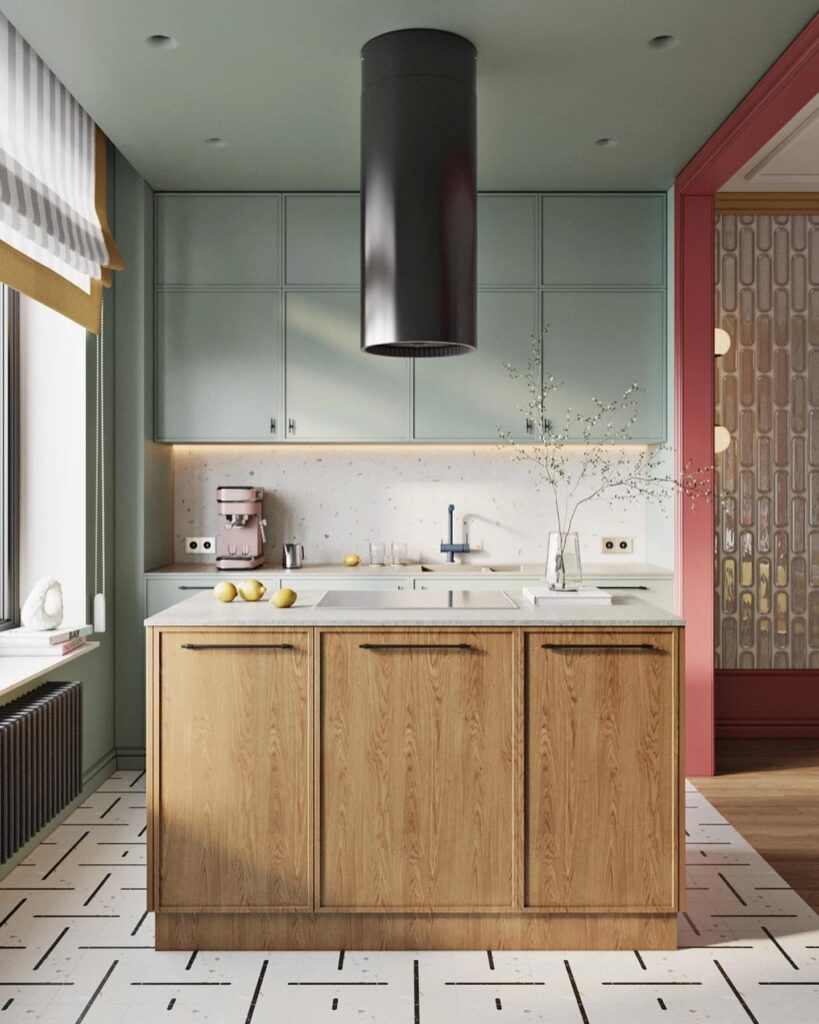


Decor and Textiles
And finally, the safest option is to bring brightness to the room’s decor and textiles

It’s easy to replace, remove, or move them around, as well as play with the palette, combining them with other colors. In residential spaces, you can lay a bright rug, hang curtains, choose bedding in this color, decorative pillows, or a throw. Glass vases, table lamps, and candles in decorative candle holders look beautiful.



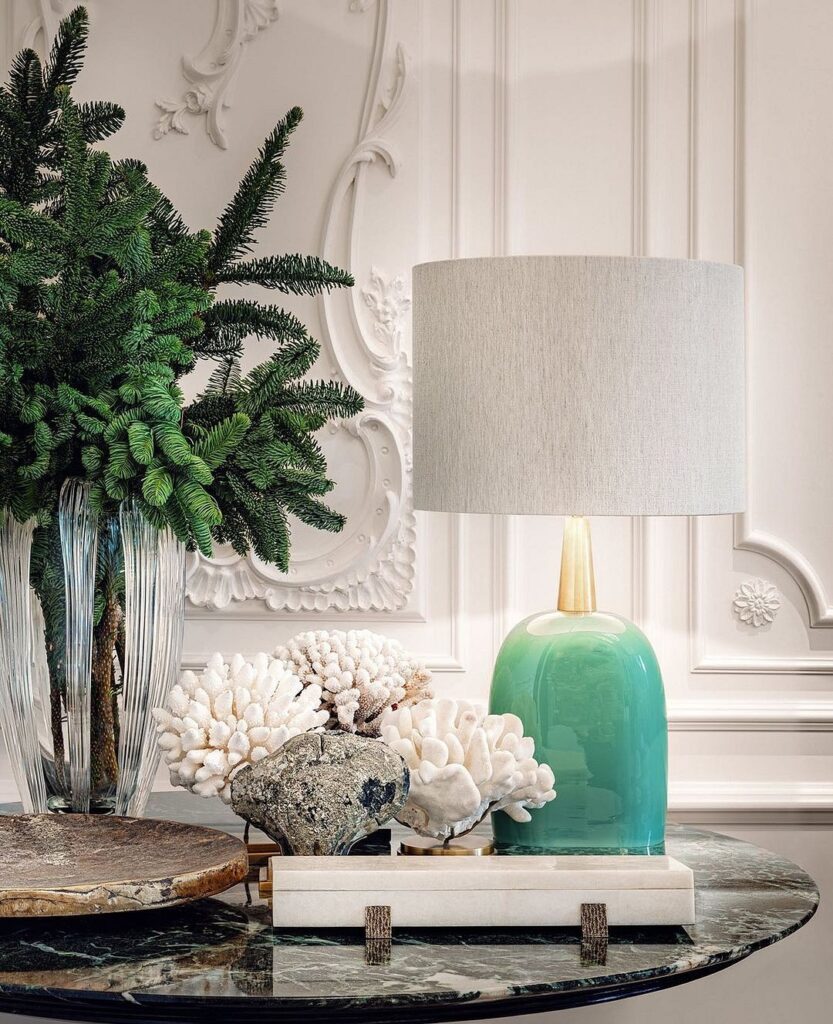



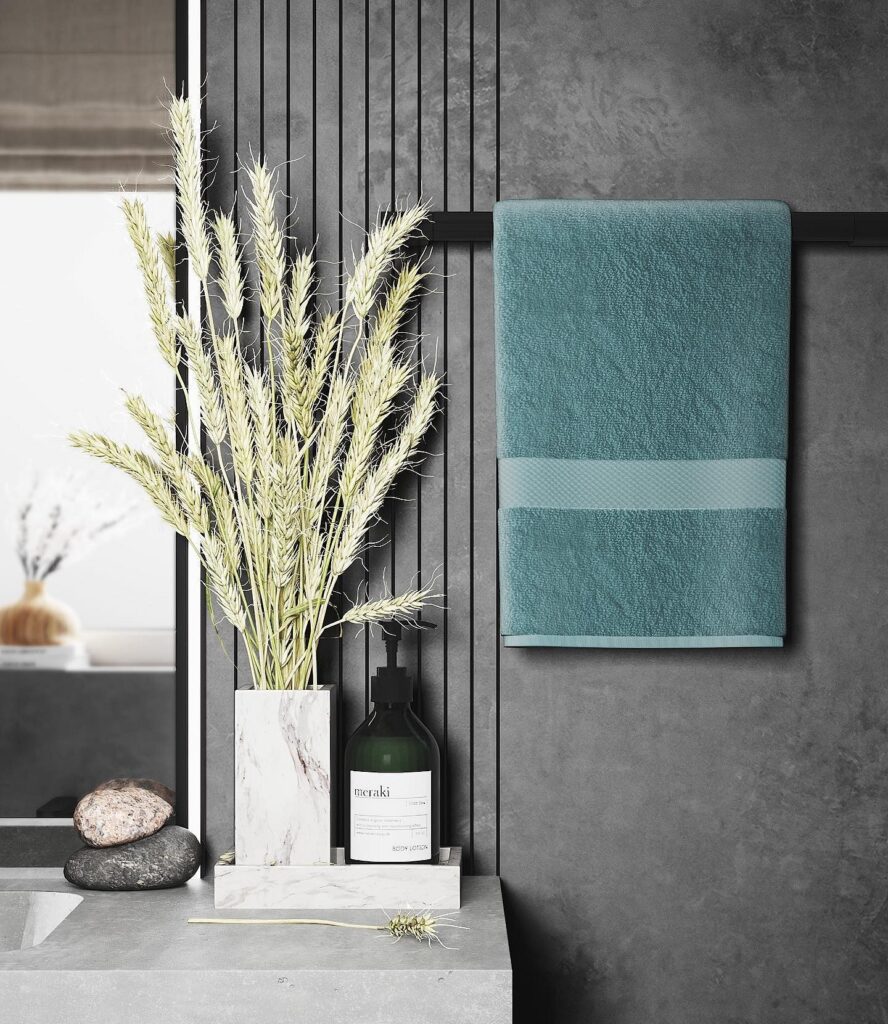
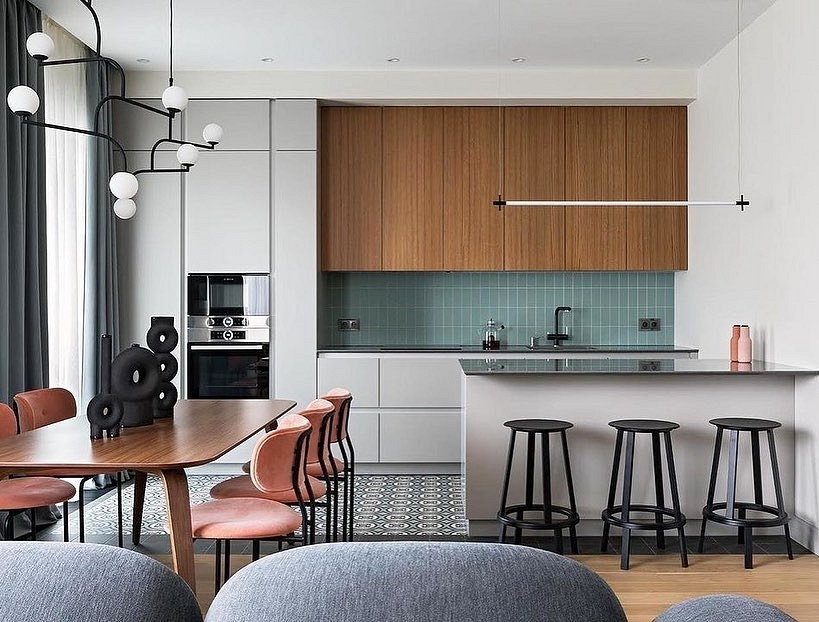
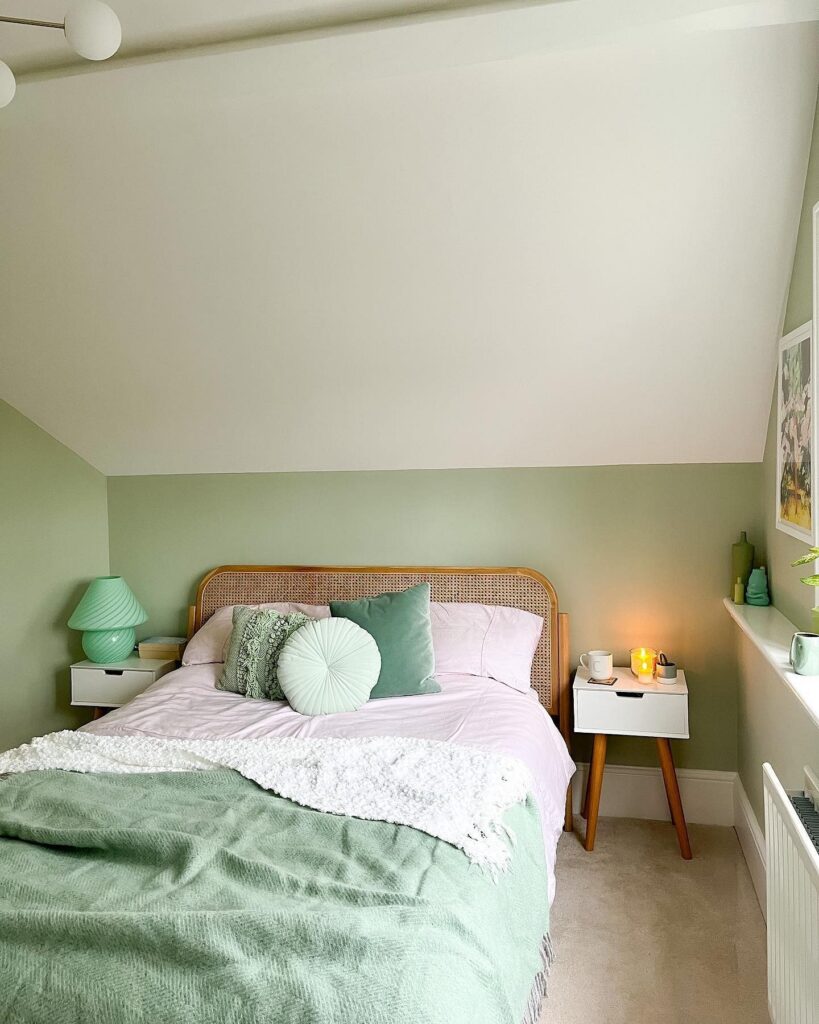

What Colors Mint Goes With
There are quite a few options for colors that go well with mint: it looks good with a base, dark shades, and other pastel tones.
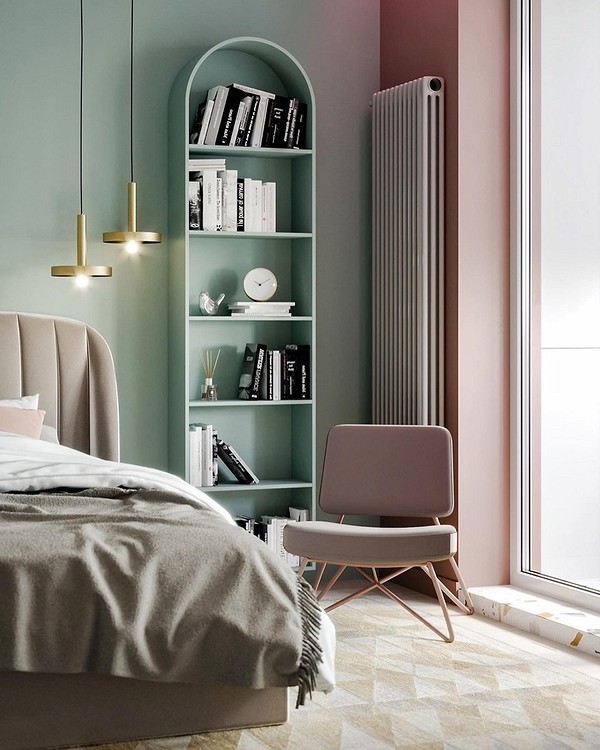
With White
Combining it with white can confidently be called classic. Such a combination maximally reveals the shades of the color and emphasizes the feeling of freshness, filling the room with air. Moreover, this combination works for visually enlarging the space.







With Pink
The second most popular combination (or perhaps even the first) is the combination of mint and pink in the interior. These two pastel shades look great together, harmoniously combining the warmth and coolness of the color palette.
This combo is often found in the bedroom and girl’s nursery interior. It’s better to take slightly muted variations of pink as the “partner” for mint: powdery, peach, pearl, salmon. Typically, mint is used as the main color, while pink is applied as accents.





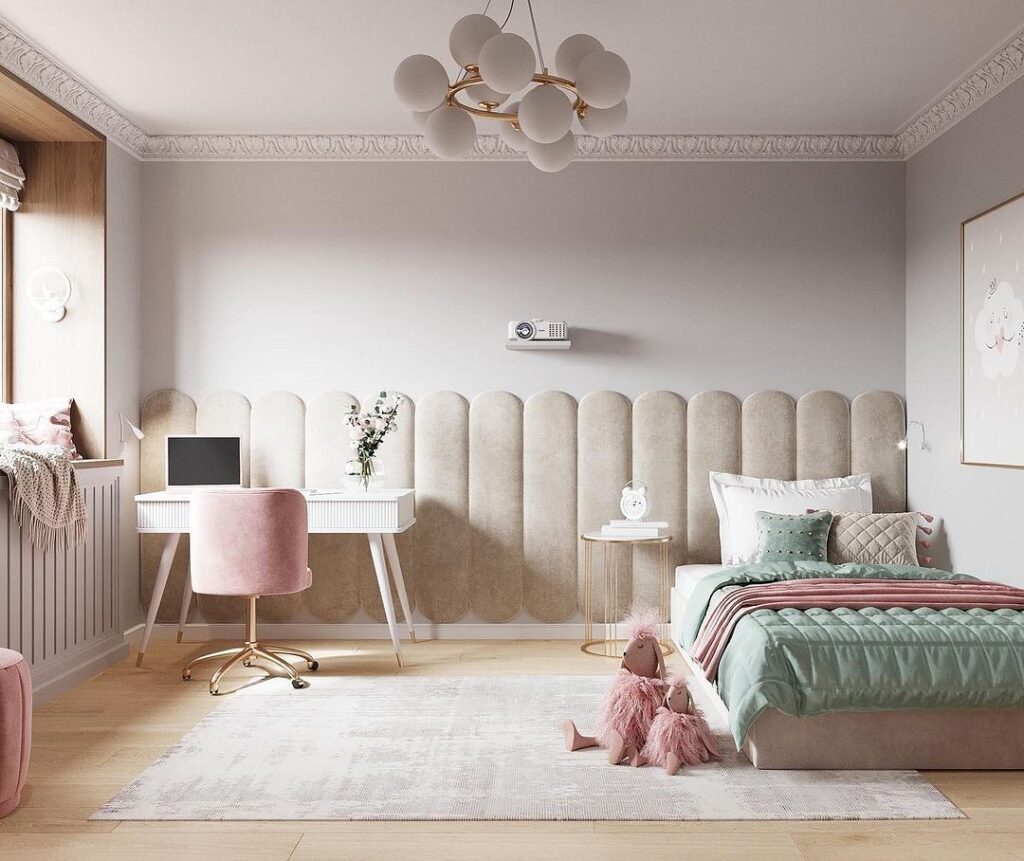


With Blue
For light rooms with windows facing the south, the combination of neighboring colors works: light green mint and various shades of blue or turquoise. Since the shade of blue is present in the mint color, a very interesting transition of halftones is obtained.
This pair confidently feels both as a base in the bathroom and as accent elements in any room – for example, in these colors, you can choose textiles or decor.






With Gray
Like white, gray complements the freshness of mint beautifully. To prevent the living space from looking too cold and unwelcoming, preference is given to muted shades of gray with a warm undertone. To soften this strict combination, you can use soft and cozy textures (wood, wool, cotton) or brass hardware.

With Purple

In combination with muted shades of purple, mint reveals itself differently — resulting in a very stylish, deep, and mysterious interior. This combination is suitable for the living room and bedroom as it has a calming effect and sets the mood for thoughtful relaxation.
To avoid the palette being too saturated, you can dilute this pair with any neutral color — for example, gray or beige.
With Yellow

You can invite sunshine into your home with the energetic combination of mint and yellow — just like in a mojito cocktail. Since yellow is very active on its own, it’s better to add it in moderation, as an accent. Mint, on the other hand, can act as either a second bright element against a general neutral background or become the basis of the palette itself. Want to make the room as warm as possible? Supplement this pair with beige and cozy wood textures.
How to Use Mint in Different Rooms

Pale green can be used in any room in the house since it’s not too bright and blends well with the base.
Here are a few tips:
- In the kitchen, a mint-colored set is great because the cool tone will slightly “cool down” the room, especially if there’s bright sunlight pouring in from the window while cooking. Pale green can confidently be used for the cabinet set or backsplash.
- In the living room, the cool palette adds restraint, and the non-standard shade will attract attention. You can use it in any guise: as a background or a bright accent by choosing decor, textiles, or individual pieces of furniture in a saturated greenish hue.
- In the bedroom and children’s room, mint will have a calming effect — the color possesses the same properties as the plant it’s named after. To make the space look darker and cozier, add more textured textiles and combine mint with creamy, beige, coffee, or sunny yellow.
- In the bathroom, the light cool tone will look especially organic due to its associations with water. You can combine it with colors close in temperature (white, gray, blue, or purple) or, conversely, create a contrast in warmth-coldness using beige, brown, orange, or yellow.

















Leave feedback about this